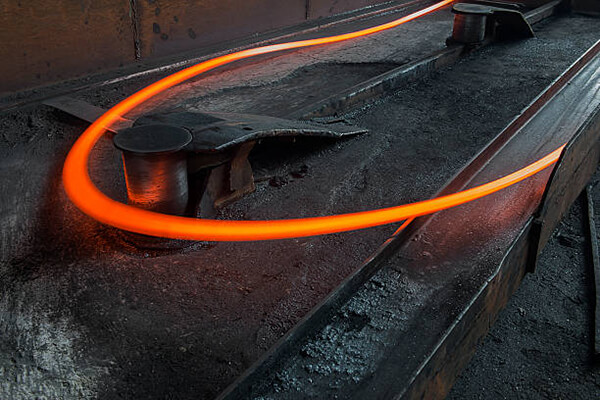Hot rolled steel bars can be made from recycled materials. The recycling process typically involves the use of scrap metal as the primary raw material, from melting, casting, rolling(hot rolling mills), to cooling. Here are some materials that can be recycled to produce hot rolled steel bars.

Scrap steel is the most common raw material for recycling into hot rolled steel bars. It includes various steel products that have reached the end of their useful life, such as demolished buildings, old cars, machinery, and steel structures. These steel items are collected, processed, and transformed into new steel products.
Steel slag is a byproduct of the steelmaking process and can also be recycled to produce hot rolled steel bars. It is formed when impurities, such as silicon, sulfur, and phosphorus, are removed from molten iron during steel production. Steel slag can be processed and used as a raw material in the manufacturing of steel bars, including rebar.
Steel turnings and shavings, generated during machining or metalworking processes, can be recycled to produce hot rolled steel bars. These metal scraps are collected, melted down, and incorporated into the production of new steel products.
Various manufacturing processes in industries such as automotive, construction, and machinery production generate steel scraps that can be recycled. These scraps, which may include trimmings, offcuts, or rejected parts, can be reprocessed and used as raw material.
Generally, we melt the raw materials in an induction melting furnace or other types of melting furnaces. Then, the molten steel will be poured into the casting machine and cast into steel billets.
The steel billets are heated in a furnace to a temperature range of around 1,100 to 1,250 degrees Celsius. This high temperature softens the steel, making it easier to shape during the subsequent rolling process.
The heated billets are then passed through a series of hot rolling mills. These mills typically consist of multiple sets of rollers that gradually reduce the billet's size while elongating it. The number of passes through the rolling mills depends on the desired dimensions and properties of the rebar. The rolling process imparts the characteristic ridges or deformations on the surface of the rebar, which enhance its bond with concrete.
After hot rolling, the rebar is cooled to room temperature. Rapid cooling methods, such as water spray or air cooling, are commonly employed to set the desired microstructure and mechanical properties of the rebar.
Once cooled, the rebar is cut into specific lengths according to customer requirements. Common lengths include 6 meters, 9 meters, or 12 meters. Additionally, the rebar can be coiled into large rolls called coils. Coiling facilitates the handling, transportation, and storage of rebar.
In some cases, rebar undergoes surface treatment processes to enhance its corrosion resistance. One common method is applying a protective coating, such as epoxy or zinc, to the surface of the rebar. This coating acts as a barrier against corrosion when the rebar is exposed to corrosive environments.
Recycling these materials not only helps conserve natural resources but also reduces energy consumption and greenhouse gas emissions associated with primary steel production. The recycled steel undergoes a melting and refining process to remove impurities and adjust the composition before it can be used in the production of hot rolled steel bars.
Please send us your request and we reply to you with in 24 hours.
Submit Request